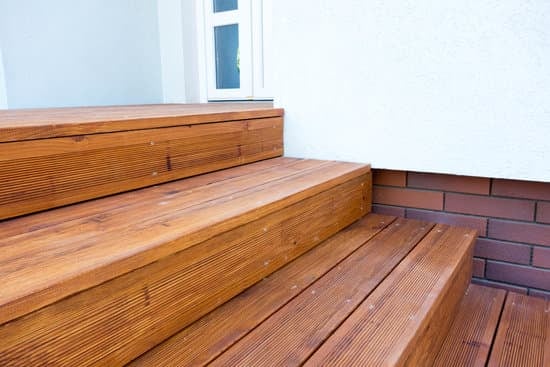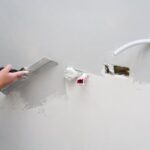Why was Home Improvement canceled? This article will delve into the behind-the-scenes of the popular TV show, from its production to its fan base and eventual cancellation. Home Improvement’s legacy and impact on its cast and crew will also be explored in this comprehensive look at the beloved sitcom.
Home Improvement left a lasting legacy on television, making it an iconic part of pop culture. The show’s portrayal of the Taylor family and their humorous antics struck a chord with audiences, cementing its place in TV history. As we take a closer look at the series, we can begin to understand why its cancellation came as a surprise to many fans.
Delving into the production of Home Improvement, we uncover interesting details about the cast and characters that brought the show to life. Behind-the-scenes insights provide valuable context for understanding how the dynamics of the production may have contributed to its ultimate demise. Additionally, examining issues such as declining ratings, contract disputes, and competition from other TV shows sheds light on why Home Improvement was canceled after eight successful seasons.
The Cast and Characters
Home Improvement was a beloved TV show that ran for eight seasons from 1991 to 1999. The series revolved around the Taylor family and the home improvement television show they produced. Tim Allen starred as Tim “The Tool Man” Taylor, a bumbling and accident-prone host of a handyman show called Tool Time.
Patricia Richardson played his patient and understanding wife, Jill, while Zachery Ty Bryan, Jonathan Taylor Thomas, and Taran Noah Smith portrayed their three sons. Throughout its run, Home Improvement received critical acclaim and garnered a large fan base.
The chemistry between the cast members was one of the key factors that made Home Improvement successful. Tim Allen’s portrayal of the lovable yet clueless lead character resonated with audiences, while Patricia Richardson’s grounded performance as his wife provided a perfect balance. The young actors who played the Taylor sons also received praise for their comedic timing and natural delivery.
The dynamic interaction between the characters on Home Improvement helped create a strong connection with fans. Viewers enjoyed watching the family dynamics unfold on screen, as well as witnessing the ups and downs of Tim’s career on Tool Time. The humor and heartwarming moments brought to life by the talented cast cemented Home Improvement as a favorite among TV audiences.
Behind the Scenes
Home Improvement was a groundbreaking sitcom that aired from 1991 to 1999, and as such, it had a significant impact on the landscape of television at the time. Behind the scenes, the show was known for its innovative use of technology and its skilled production team.
The program stood out for its “Tool Time” segments during each episode, which featured host Tim Taylor presenting various DIY projects in a comical manner. This unique format required careful coordination between the writers, actors, and crew to ensure that each episode ran smoothly.
The success of Home Improvement also relied heavily on its skilled production team. The show’s set was designed to resemble an actual house in order to provide a realistic backdrop for the characters’ interactions. Additionally, the special effects and stunts used during filming often required intricate planning and execution. Throughout its run, Home Improvement maintained a high standard of production quality that contributed to its popularity among viewers.
A notable aspect of the show’s production was the incorporation of real power tools into its filming process. This decision added an extra layer of authenticity to the “Tool Time” segments but also necessitated stringent safety measures to prevent accidents on set. The collaboration between the production team and the cast ensured that these segments were not only entertaining but also carried important messages about tool safety for viewers at home.
| Key Point | Data |
|---|---|
| Airing Period | 1991-1999 |
| Main Format | “Tool Time” segments |
| Set Design | Resembled an actual house |
Fan Base and Popularity of the Show
Home Improvement gained a dedicated fan base and became a popular TV show during its run. The sitcom resonated with viewers and became a staple in many American households. Its success can be attributed to various factors, including the relatable family dynamics, humorous antics of the characters, and the chemistry among the cast members.
The popularity of Home Improvement was further evidenced by its strong ratings and viewership numbers. The show consistently ranked high in the Nielsen ratings and garnered a large audience each week. This indicated that not only did the fan base enjoy the show, but new viewers were also tuning in regularly.
Additionally, Home Improvement’s impact extended beyond just television ratings. The show spawned a variety of merchandise, from clothing to home decor items, which further solidified its place in pop culture. The lovable characters also became cultural icons, with their catchphrases and comedic moments being widely recognized and quoted by fans.
- Despite being aired more than 20 years ago, reruns are still being enjoyed by younger generations.
- Many fans continue to express their love for Home Improvement through social media platforms and fan communities.
- The lasting popularity of the show is a testament to its endearing quality and timeless appeal.
Declining Ratings and Viewer Interest
The decline in ratings and viewer interest played a significant role in the cancellation of Home Improvement. Despite being a top-rated show during its earlier seasons, the sitcom experienced a gradual drop in viewership as it progressed. This decline can be attributed to various factors, including changes in audience preferences, shifts in popular culture, and an oversaturation of similar programming.
As the 90s came to a close, television audiences began to gravitate towards different types of content, such as reality TV shows and dramatic series. Home Improvement, with its traditional sitcom format, struggled to retain the interest of viewers who were seeking fresh and innovative programming. Additionally, the rise of cable networks and streaming services provided audiences with more diverse options for entertainment, making it harder for Home Improvement to compete for attention.
In addition to changing audience preferences, the decline in ratings may also be linked to a decrease in the show’s overall quality or appeal. As storylines became repetitive and characters failed to evolve, longtime fans may have grown disenchanted with the series. Furthermore, new sitcoms entering the market presented stiffer competition for Home Improvement, leading to further erosion of its once-massive viewership.
| Reasons for Decline | Impact on Viewership |
|---|---|
| Changes in audience preferences | Decrease in ratings |
| Oversaturation of similar programming | Lack of innovation |
| Inability to compete with new content | Diminished appeal |
Contract Disputes and Cast Departures
Challenges on the Set
As Home Improvement moved into its later seasons, there were various challenges that arose behind the scenes. One of the significant issues was contract disputes among the cast members and production team. This led to tensions on set and a strain on the working relationships between the actors and crew. The disputes also resulted in certain cast members departing from the show, which eventually played a role in its cancellation.
Cast Departures
One of the most notable departures from Home Improvement was that of Pamela Anderson, who played Lisa, Tool Time’s original “Tool Girl.” Ongoing conflicts with both her co-stars and producers led to Anderson leaving the show after two seasons. Another departure that had an impact on the show was that of Debbe Dunning, who replaced Anderson as the new “Tool Time Girl” Heidi Keppert.
The departure of other key cast members such as Taran Noah Smith (Mark Taylor) also affected the dynamic of the show. As characters exited and were not properly replaced or written out of storylines effectively, viewer interest began to decline. This ultimately played a role in contributing to Home Improvement’s cancellation.
Impact on Show’s Continuity
The departures due to contract disputes not only created obstacles in terms of maintaining consistency within character dynamics but also impacted future storylines. Script adjustments had to be made to accommodate these changes and it became increasingly challenging for writers to sustain narratives that engaged viewers. As a result, these disruptions played a substantial part in Home Improvement’s eventual cancellation.
Competition From Other TV Shows
When “Home Improvement” first premiered, it quickly became a beloved and popular show among viewers. However, as the years went on, the show faced tough competition from other TV programs. The rise of new sitcoms and reality shows put pressure on “Home Improvement” to maintain its viewership and ratings.
One of the biggest challenges for “Home Improvement” was competing with other popular shows airing at the same time slot. With more options available to viewers, the show had to work harder to capture and retain its audience. This increased competition ultimately led to a decline in ratings as viewers began to explore different programming options.
Additionally, changes in television trends also played a role in the cancellation of “Home Improvement.” As new genres and formats emerged, capturing the attention of audiences, traditional sitcoms like “Home Improvement” faced an uphill battle in staying relevant. This shift in viewer preferences made it difficult for the show to keep up with changing audience demands, contributing to its eventual cancellation.
The Impact of the Cancellation on the Cast and Crew
The cancellation of Home Improvement had a significant impact on the cast and crew of the show. After eight successful seasons, the sudden end of the series was undoubtedly a difficult transition for everyone involved.
For the actors, such as Tim Allen and Patricia Richardson, who had spent nearly a decade portraying their respective characters, it meant saying goodbye to familiar roles and colleagues they had grown close to. The crew members, from writers to set designers, also faced the challenge of finding new work after the show’s end.
Despite the disappointment of the cancellation, the legacy of Home Improvement continues to live on through syndication and DVD releases. Many fans still hold a strong affinity for the show and its characters, ensuring that the impact of Home Improvement will be felt for years to come. Additionally, several members of the cast and crew have gone on to find success in other projects after their time on Home Improvement, demonstrating their talent and resilience in a competitive industry.
Although it is bittersweet to look back at why Home Improvement was canceled, it is clear that the show’s impact reaches far beyond its original air dates. The bond between the cast and crew remains strong, with reunions and retrospectives keeping the spirit of Home Improvement alive. While its cancellation marked an end to an era, it also paved the way for new opportunities and continued admiration from loyal fans around the world.
Frequently Asked Questions
Why Was Randy Written Out of Home Improvement?
Randy was written out of Home Improvement in the later seasons due to actor Jonathan Taylor Thomas’s decision to focus on his education and pursue other opportunities outside of the show. This led to his character, Randy Taylor, being given a storyline where he left for a job at a wildlife research study in Costa Rica.
Did Home Improvement Have a Spin Off?
Yes, Home Improvement did have a spin-off called “Buddies,” which focused on two of Tim Taylor’s friends, Leon and Harry, as they started their own business. However, the spin-off wasn’t successful and was cancelled after just five episodes.
Why Did Jill Leave Home Improvement?
Jill, played by actress Patricia Richardson, left Home Improvement in the final season due to contract disputes. The show’s producers and Richardson were unable to come to an agreement over her contract terms, so she made the decision to leave the show before its last season concluded.

I’m thrilled to have you here as a part of the Remodeling Top community. This is where my journey as an architect and remodeling enthusiast intersects with your passion for transforming houses into dream homes.





